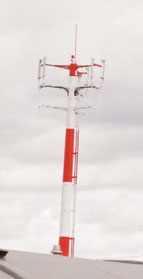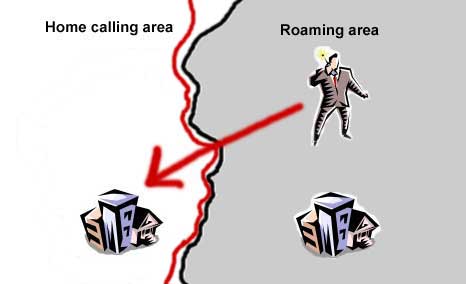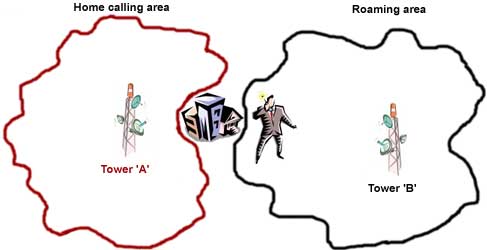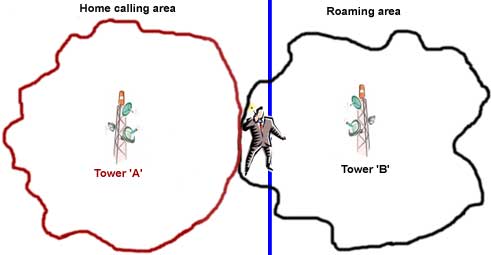Some
Answers to Common Questions About Cell Phones.
New
Question: When
does a provider renew my contract?
A: Several
reasons. 1. if you change the plan for any reason, even if you just
go to higher minutes. 2 If your provider offers Vacation as a plan,
and not as a suspension. (See vacation info
below.) 3 If you want the latest rebates on phones. 4 If you want the
free evenings to start earlier (Example: 7PM instead of like 9PM).
New
Question: Why
can't I send a picture to someone with a different provider?
A: You can,
but you can't dial them, you have to e-mail it. If you are with Sprint,
and they are with T-mobile, they don't have access to the sprint network,
and therefor can't just dial you number and send the picture. They could
send it to your e-mail address for you phone, (you@sprint.com) and you
can download it to your phone from your e-mail.
Q:
If my cell phone is lost/stolen, can someone use it?
A: Depends.
If you lose your cell phone, and you have not noticed or reported it
lost/stolen to your provider, then yes, someone can use it just as you
can. The sooner you call in to report it, the better. Providers will
tell you, you are responsible for all charges up until the time you
called in and reported your cell phone missing. Do this as soon as you
can and the service will be suspended, and the lost/stolen cell phone
denied access. (Some providers may charge a small fee for this, and/or
reinstating your service)
Q:
Is there a waiting period to get my service and phone suspended/reinstated?
A: No. Once
you verify yourself to the Rep, It should take seconds for request to
go through the system.
Q:
Now that my lost/stolen cell phone has been denied, can someone program
it for a different wireless number or different service?
A: No. It
is the cell phone itself that is denied access, and not the wireless
number.
Q:
Is my wireless number married to my cell phone now that's it been programmed?
A: No. Numbers
are somewhat married to your plan and not to your cell phone. You can
buy a second cell phone for the same provider and program that phone
with your wireless number in place of the first cell phone. Even in
the same day. Businesses with dozens of phones provided to their employee's
will do this all the time.
Q:
Can two cell phones be programmed for the same wireless number?
A: No, but
sometimes what can happen is while a customer is programming a replacement
phone, the old phone is left on. Then for a short time, two phones will
be sharing the same wireless number. What will happen is the system
will see two phones (with different serial no's) are using the same
service. The system may deny or fail both phones (because it will look
like fraud to the system), and then you will be stuck on another phone
for a long time talking to your provider's Customer Care Rep or Technical
Help getting the mess fixed. The best thing to do when you want to program
a new phone is to call your provider from a landline, make sure your
old cell phone is off, and have your new cell phone handy.
Q:
Can one cell phone have more then one wireless number?
A: Depends
on the cell phone. Some only can have one wireless number programmed
in, others can have two or three. It's called Dual-NAM or Multi-NAM
(Numeric Assignment Module). People needing service in two or three
different places in the country would do this. It's not used much anymore
because you will have to get separate plans and service for each wireless
number programmed. Now people who need to travel all over the country
will go with a total coverage plan, or a National plan.
Q:
Can a cell phone from, say Verizon, be programmed for, say AT&T
Wireless?
A: No. Regardless
of what kind of cell phone it is, even if they are both the same make
and model of phone, they cannot be switched from one provider to another.
Q:
Is it true that even if a cell phone has no service, you can still call
911?
A: Yes. Even
if a cell phone has been taken off of service, regardless of why, and
as long as there is power in the battery and the cell phone has a decent
signal, you still make 911 calls in an emergency.
Q:
What are these new regulatory fees I'm getting charged now?
A: These
new fees are for the consumer's benefit. One is number
pooling. Without getting too technical, you can keep your number
regardless of which provider you switch to as long as you are in the
same area. Also, let's say you call in and start new service and need
a number for your area, but your provider is out of numbers in your
area. And lets say another provider has lots of numbers in your area,
but has little customers needing them. The second provider must give
up some of these numbers (or put back into the pool) so the first provider
can give you a number to use.
Another important
service included with this fee, is enhanced 9-11.
Before you used to have to describe where you were to 9-11 during an
emergency. Now you don't. They can now find out with triangulation.
Fantastic for emergencies where the person who needs assistance, can't
speak, or needs to be quiet.
Think about that
the next time you feel under $2 is alot of money. What it is, is peace
of mind.
Q:
Why when I signed up, they promised free Start Of Service/activation
fee, yet I'm getting an activation fee!?!
A:
Some third party venders/dealers have their own separate Start
Of Service/Activation fee on top of the SOS fee
from the provider, which means, there is actually 2, SOS fees.
These third party vendors/dealers will sometimes get you to sign a contract
stating you can't cancel with them (and not the provider) for at least
60 to 90 days or more, making you miss the Provider's 'Buyer's Remorse'
window of 15 to 30 days. Nice
huh?
Customer Care reps
usually try to warn consumers to be wary of third party vendors separate
charges, or better yet, always deal with a proper provider's retail
store.
Q:
Why would I pay to download ring tones when I can get them for free
on a free website?
A: The
whole time I worked doing customer care I had several people call in
with funny characters on screen, everything not working except one or
two things, etc. Because they downloaded free ring tones on a various
site. Basically you can get viruses on cell phones. More
here.
Basically, if you
did this and got a virus, your phone is now junk and won't be covered
by Warranty. You probably realize now, it wasn't worth not having to
pay the extra $1.50 or whatever your cell phone company charges for
ring tones.
Q:
What does 'Extended Area'
mean?
A: Extended
area is in or near your home calling area, but on a different provider's
tower. This tower you are on maybe a provider that shares towers with
your provider, or they may not. The big problem with Extended areas
are, your provider doesn't know who's tower you are on until that provider
sends your provider the bill. This is when you will see a "Delayed
Billing' charge on your bill. It will show up as charges for a past
date. It will look like your provider is charging you twice, but they
are not.
What I usually tell
customer's is when you are in an Extended area, treat it like a Roaming
area.
Q:
What's the real
difference between Prepaid and postpaid?
A: Besides
the obvious, Prepaid you get a set amount of minutes and when
they run out, you can't call anymore (These types of plans are the best
to start the teens out with). With Postpaid, if you go over your
minutes, you can keep calling, but now you will pay a set amount for
each minute over your plan minutes.
So, for example,
let's say you have a local plan and you have 400 anytime minutes each
month. Now let's say this month you used 476 minutes. In your contract,
you will be charged $0.45 a minute over your plan minutes. Since you
went over by 76 minutes, you will have to pay an extra $34.20 on you
coming bill.










